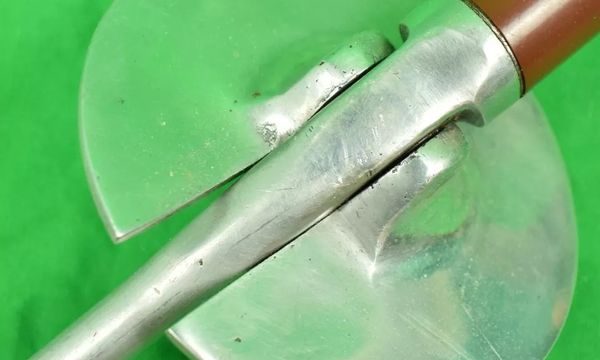Vintage kitchens often have a pull-out cutting board, theoretically to save space. However, it’s since been discovered that they were actually intended to serve a different purpose entirely.
Real Purpose of a Pull-out Cutting Board
While pull-out cutting boards aren’t common in modern kitchens, they did once serve a very useful purpose. Seemingly, they were actually once called a breadboard, thereby explaining their actual intended purpose. Breadboard is “a board on which dough is kneaded or bread is sliced.”
Although there is no mention of using the breadboard as a pull-out cutting board, they do look incredibly similar to today’s cutting board, and it’s understandable that many people would use them for that purpose. Especially because it’s less common today for people to knead their own bread, on the other hand, most families still cut their own fruits and vegetables. So, having the option of a pull-out cutting cutting board seems far more functional in suiting the needs of families today.

However, there’s a major downside to using a breadboard as a pull-out cutting board. Moreover, it’s a major reason why they often have to be replaced. Because they were actually designed to be a breadboard, they aren’t capable of taking the “wear and tear” that comes from being used for chopping and dicing. Nor were they designed to absorb the moisture that comes from produce. Consequently, they become warped from the moisture and damaged by the knife’s blade.
Finding a replacement pull-out cutting board for an older home can be difficult. Luckily, there are plenty of options today that are intended to be modern versions of a cutting board. And if the mood strikes, options to buy a breadboard too!
Suggested Maintenance
Regardless of whether you opt to use the pull-out cutting board for that purpose, or its original purpose, it’s essential to use good hygiene practices in the kitchen. This helps minimize food contamination from things like E. coli and norovirus. Most people know that washing hands before cooking or baking is the first and more important step. Alternatively, it’s a good idea to also wipe down surfaces before and after each step.
Another good practice is to give dishes, breadboards, and pull-out cutting boards ample time to air dry, further killing any bacteria that might be hanging around in the water droplets. Experts suggest cleaning your cutting board after each use. As well as sanitizing at least once a week. For plastic boards, white vinegar, lemon juice, or baking soda are all great eco-friendly options to clean and sanitize. Meanwhile, wooden boards can be cleaned using warm water and dish soap, or lemon juice.
Next, having the right kitchen utensils is a good way to avoid spreading foodborne illnesses. For example, instead of using one made of wood, try one that is less porous. Therefore, it’s less susceptible to bacteria buildup that gets caught in the crevices. Additionally, consider something like maple wood because it’s resistant to knife scarring and is also anti-microbial. CuttingBoard.com has several options for replacements including some for people who have vintage kitchens, equipped with pull-out cutting boards or breadboard.





